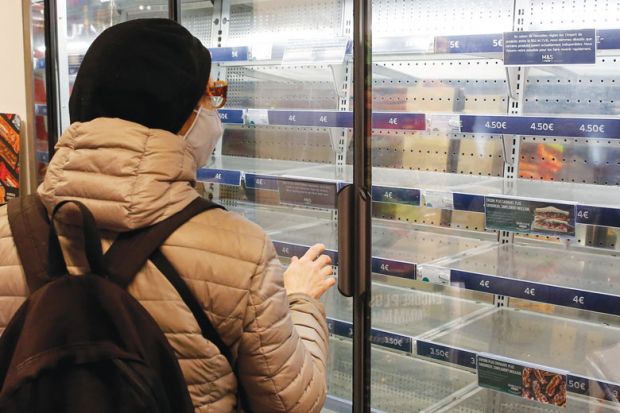US scientists reviving their laboratories as Covid eases have been finding new obstacles in the form of supply shortages attributed to the pandemic and other distribution problems.
Many of the shortages, such as of masks and other protective clothing, are long-standing and global and can be directly tied to the pandemic, or stem from distribution chains withering during a year of low demand.
Other scarcities appear to have resulted from more random events, including plastics manufacturing halted by the winter power blackouts in Texas, and import restrictions tied to overseas labour abuses and wildlife protection.
Altogether, according to a tally kept by the US Food and Drug Administration, at least a dozen product categories used in medical laboratories are facing shortages. Similar problems are being seen in other countries.
Backlogs for some key items, said Avery August, professor of immunology at Cornell University, started arising at the beginning of the pandemic, although the shutdowns then meant effects on research were limited.
But now, with operations reopening across the country, order delays are still running about two to three months behind normal, said Professor August, whose work seeks treatments for asthma.
Other academic scientists around the country describing supply problems are working in areas that include bioengineering, synthetic biology, epigenetics, stem cells and cancer.
The result, Professor August said, meant “bartering with other labs, conserving where we can, but also holding off on some experiments”. Scientists elsewhere have reported cleaning and reusing supplies that are normally disposable.
The problem appeared to be nationwide, an FDA spokeswoman said. “While the national supply chain for testing supplies and equipment has improved since the beginning of the pandemic,” she said, “some shortages remain.”
Supply troubles extend well beyond scientific laboratories. This month the Biden administration responded to a series of supply chain disruptions throughout the US economy by creating a task force that will be given 100 days to assess the problem and put forth recommendations.
Laboratory items listed by the FDA as being in short supply include gloves, gowns, masks, respirators, growth media and other chemical agents, and tubes and other test instruments.
Laboratories have also struggled with supplies of rhesus monkeys due to vaccine testing needs and wildlife protections, and of frogs, because the collapse in demand during the lockdown led to production shutdowns.
In the long term, however, experts expected that the effects of supply shortages would prove to be a secondary-level problem compared with the damage that Covid has wreaked on academic research and the careers of younger scientists.
One audit report this month, by the US Government Accountability Office, counted nearly $40 million (£28.7 million) in added project costs from delays at major facilities – astronomical observatories and research vessels – operated by the National Science Foundation.
“The broader pandemic has been a much bigger threat to grant support, and student participation, and research careers more broadly,” Professor August said, “particularly those of younger scientists, women, and those who are under-represented.”
Register to continue
Why register?
- Registration is free and only takes a moment
- Once registered, you can read 3 articles a month
- Sign up for our newsletter
Subscribe
Or subscribe for unlimited access to:
- Unlimited access to news, views, insights & reviews
- Digital editions
- Digital access to THE’s university and college rankings analysis
Already registered or a current subscriber? Login








